I'm trying to compensate a flyback boost circuit.
Unfortunately I seem to be failing to make the gain of the system ever cross 0 dB. I feel like I'm missing something obvious... Like a pole? I'm following the app note for the PMIC I'm using, so I feel like I'm not to far off. It seems like my output capacitance / ESR could be the issue? I have never run into it, but is there a case that the ESR / Capacitance combination is such that you can not achieve loop stability?
System is a 24 to 360 V flyback converter, operating in DCM. I have 2x 22 uF ~5 ohm aluminum capacitors on the output. I made another sheet with a composite AL capacitor and a 1 uF film, it did not help convergence...
I have a pole zero from capacitor, load and ESR. I then have the comp type 2 poles and zero... I also have the option to add feed forward, but right now made the values insignificant.
Update: Thanks for all the advice, I also found I was missing a pole in my calculations for compensation... So once this was fixed, I was able to get to a marginal stability. Still some work to do with a feed forward and modeling the parasitic capacitance on my feedback network (~720k creates a good LPF unfortunately...)

